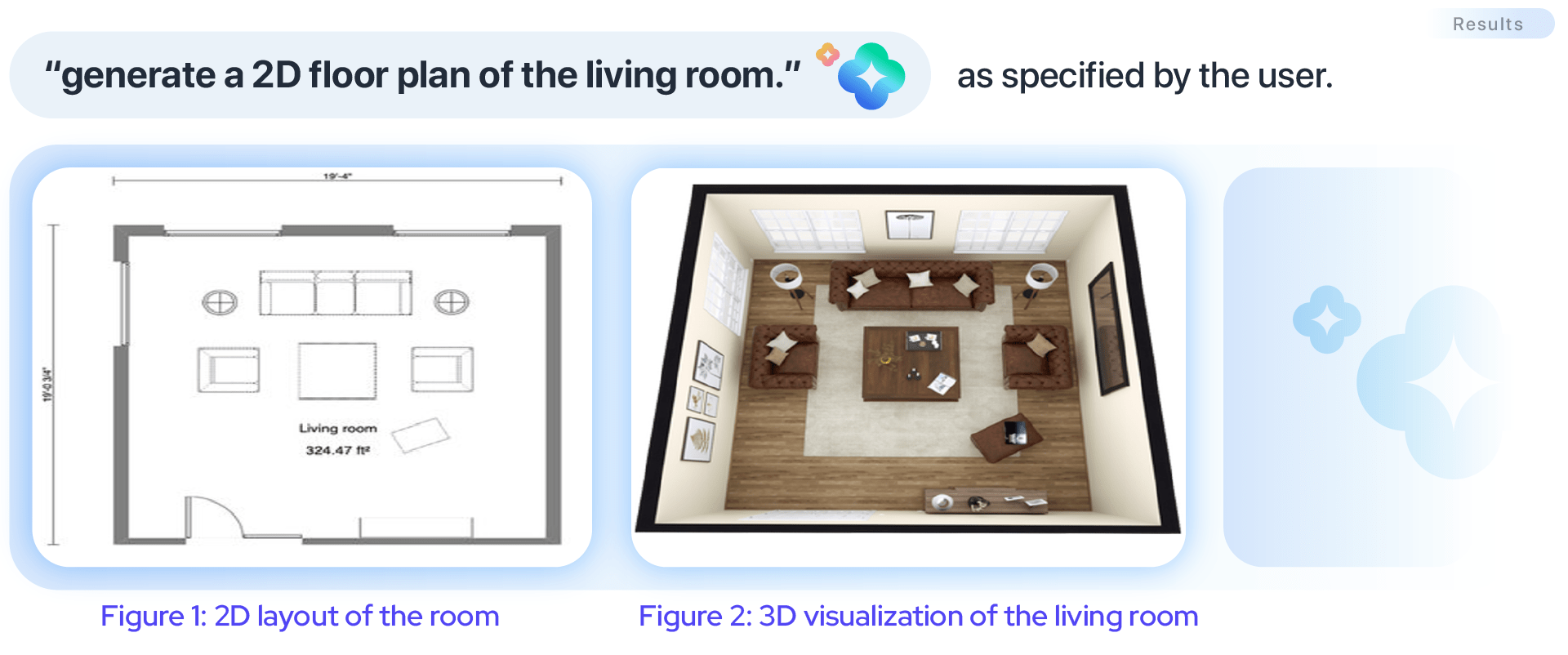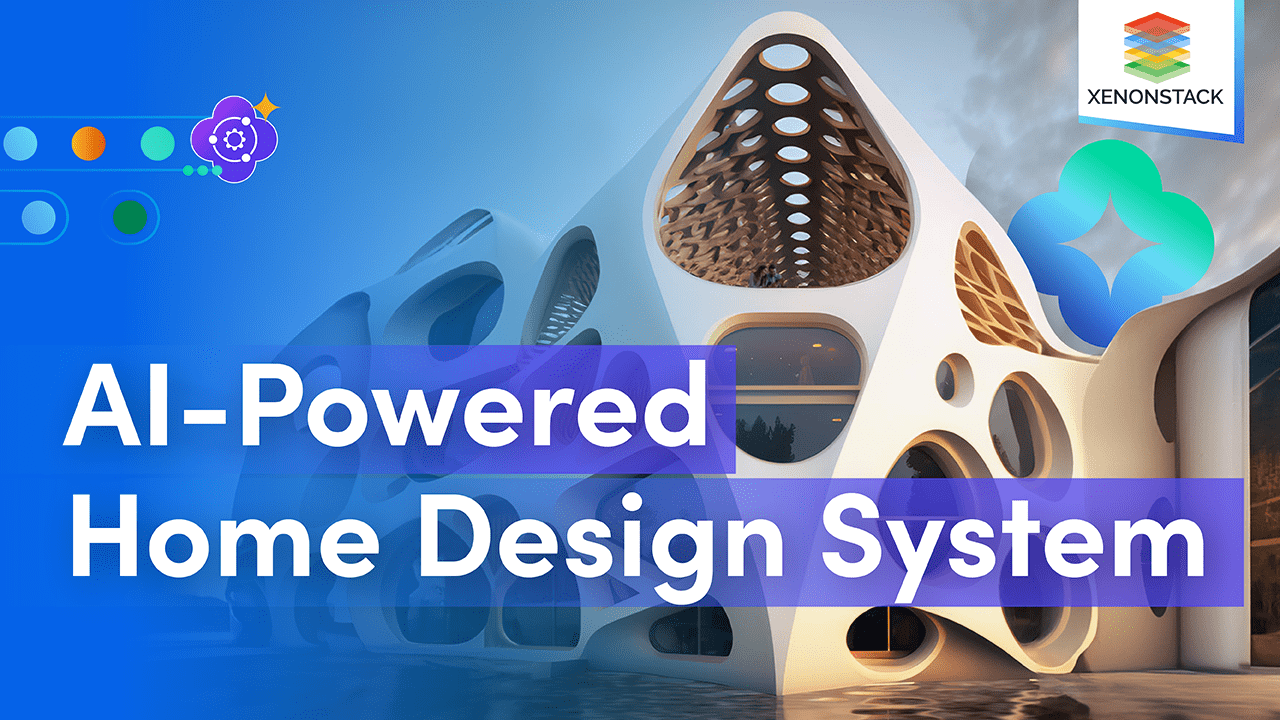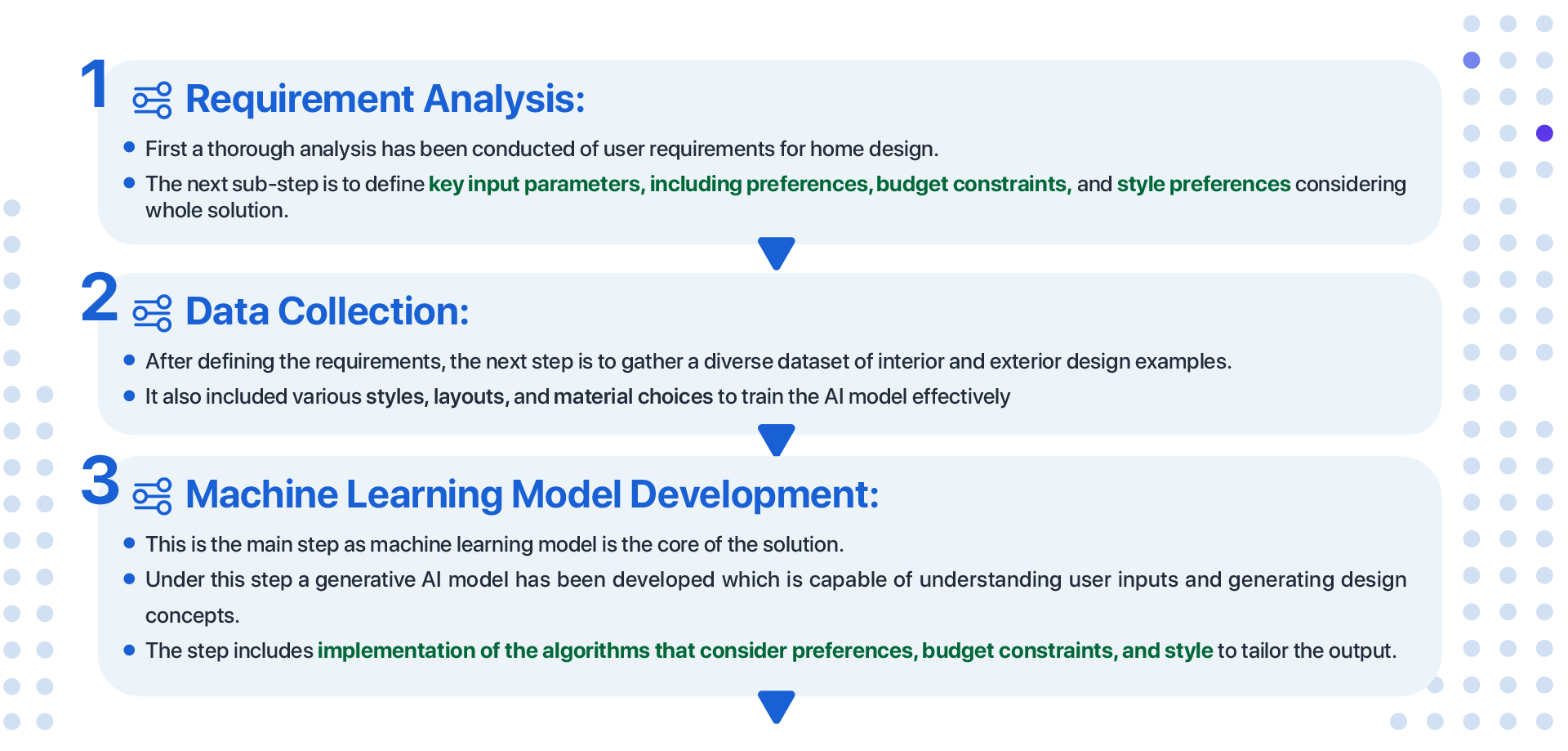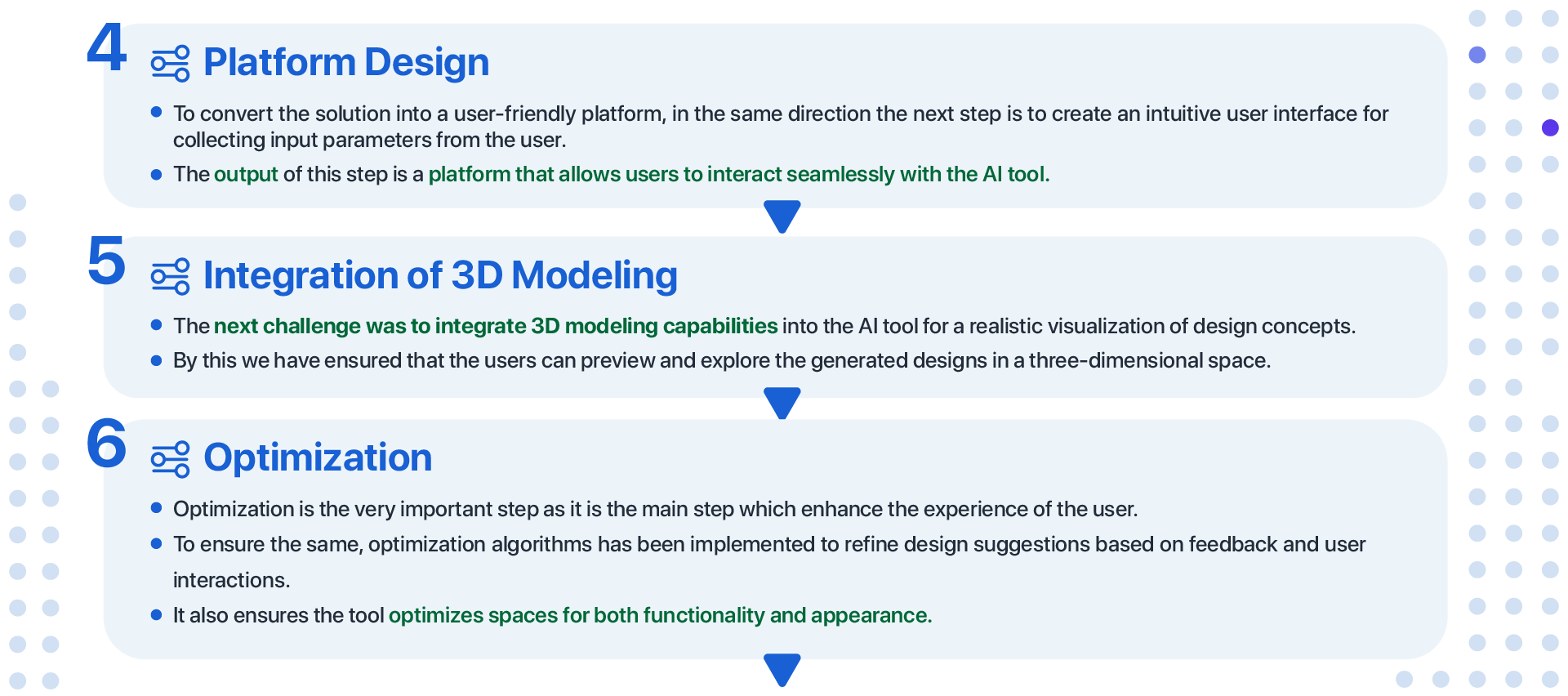Objective
The objective here is to develop an AI driven tool for home designing aims to transform user’s envisioned spaces into reality. The user provides various input parameters according to the requirements, and the AI tool swiftly generates or modifies the interior or exterior design within seconds, considering aspects such as preferences, budget or style. This process is facilitated by an AI home designing tool that tailors the design output to align with the individual needs or requirements of the user. This generative AI model suggests room layouts, furnishing arrangements, and material choices, thereby optimizing spaces for functionality and appearance. Hence, it is time effective as it rapidly generates design concepts according to the user’s choice. With 3D modeling, the user can preview the final look of the house space and recognize any potential issues, thus making it convenient to incorporate any changes before final implementation.
Methodology
To accomplish this objective, required steps are organized into 3 primary stages:

Result
The following figure 1 shows the 2D layout of the living room generated, corresponding to the prompt “generate a 2d floor plan of the living room” as specified by the user.

Figure 2 depicts the 3D visualization of the living room. The user can visualize this final look of the living room generated according to his preferences.
Conclusion
This generative AI system has revolutionized the architectural home design industry. It fosters creativity by generating various distinct layouts aligned with specified input parameters provided by the user. This generative AI model suggests room layouts, furnishing arrangements, and material choices, thereby optimizing spaces for functionality and appearance. Hence, it is time effective as it rapidly generates design concepts according to the user’s choice. Furthermore, it adapts to specific design requirements and customized layouts are generated according to input specifications such as room size, number of rooms, paint color or furnishings. With 3D modeling, the user can preview the final look of the house space and recognize any potential issues, thus making it convenient to incorporate any changes before final implementation.





